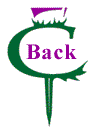 Highland Dancing is fairly standardized throughout the world. The primary organization for the regulation and promotion of Highland Dancing is the Scottish Official Board of Highland Dancing. This body sets the "official" steps into several textbooks on Highland Dancing. They annually select the Championship or set steps that must be performed at all competitions designated as Championships. This body also regulates judging standards and is essentially the "final word" on Highland Dancing.
Highland Dancing is fairly standardized throughout the world. The primary organization for the regulation and promotion of Highland Dancing is the Scottish Official Board of Highland Dancing. This body sets the "official" steps into several textbooks on Highland Dancing. They annually select the Championship or set steps that must be performed at all competitions designated as Championships. This body also regulates judging standards and is essentially the "final word" on Highland Dancing.Countries throughout the world have organizations that function as subsidiary bodies to the SOBHD but handle local adjudication, registration of dancer and other administrative tasks. In the United States, this is the Federation of United States Teachers and Adjudicators, while Canada has ScotDance. These bodies almost universally recognize the authority of the SOBHD as the "final word". [There is at least one exception: New Zealand Highland Dancers belong, not the the SOBHD, but to their own adjudicating body, referred to as the Academy.]
For the National dances, there are several organizations which regulate the set series of movements. They include the Scottish Official Highland Dancing Association, the Scottish Dance Teachers Alliance, the United Kingdom Alliance, and the British Association of Teachers of Dance. These various bodies work in tandem with the SOBHD and offer medal testing and membership exams which certify Highland teachers and their technique. The various bodies usually agree on the majority of steps, with minor technical differences creeping in here and there. In general competitions, conforming with SOBHD regulation is the key issue, while steps from any of the Nationals' examining bodies are acceptable, unless specified on the competition entry forms. [A BATD competition, for example. This is very rare.]
To compete as a highland dancer in the United States, you must be a member of FUSTA, or the Federation of United States Teachers and Adjudicators. This body handles the registration of American dancers and FUSTA membership is recognized by other jurisdictions such as Canada and Scotland. FUSTA membership involves a minimal annual fee and entitles dancers to compete that year within a certain skill level.
There are five levels of competition. Primary is restricted to dancers 7 years old or younger. Beginner is for dancers who begin highland after age 8 and for Primaries who turn 8. Novice is the next skill level. A dancer is upgraded to Novice after winning six stamps [placing 1st, 2nd, or 3rd in any dance at six separate competitions]. Intermediate follows Novice and upgrade occurs after receiving six stamps in Novice. Dancers must remain in Intermediate for exactly one calendar year, regardless of wins/losses. The Intermediate year is essentially just a practice year before the dancer is admitted to the highest category, Premier. Premier dancers are the elite of highland dancing and are usually required to perform longer, more difficult dances than the lower level dancers.
Competition organizers generally divide each skill level into several age groups to keep the contest managable and to provide a more level playing field for dancers of different ages and abilities. Even so, it is not unheard of for an adult dancer to be competing in the "Beginner 12 and older" category against a large number of 12 and 13 year olds!
Competition is not required of dancers at the Columbia School. We encourage it, as it does help develop your dancing. However, we do not push competition or even performance on any dancer who truly does not want to do so. We have a number of dancers who do it simply for the cardiovascular/aerobic benefits and because they just love to dance. The decision to compete is strictly up to the dancer and his/her parents. We do, however, encourage everyone - whether they compete or not - to go to a competition and watch the other dancers, particularly the elite Premier dancers. This helps demonstrate to our younger and less experienced dancers exactly how the steps should be performed and what to work towards.
